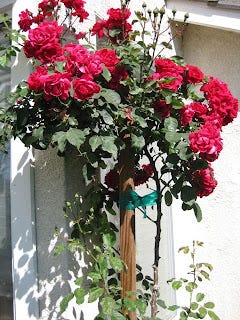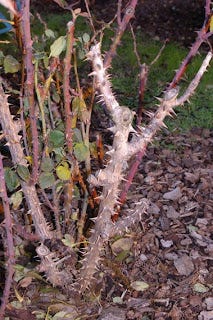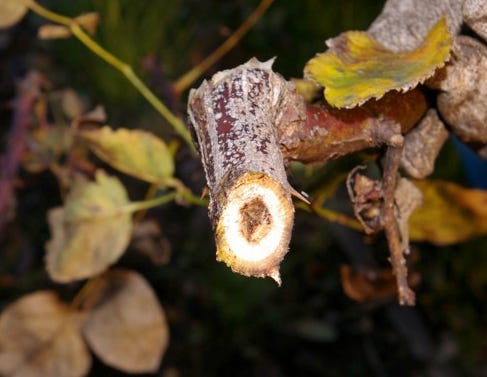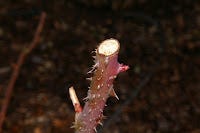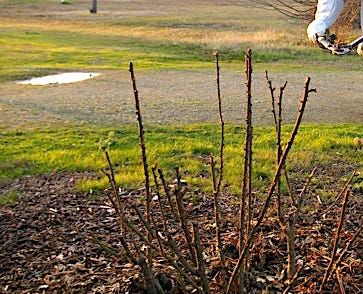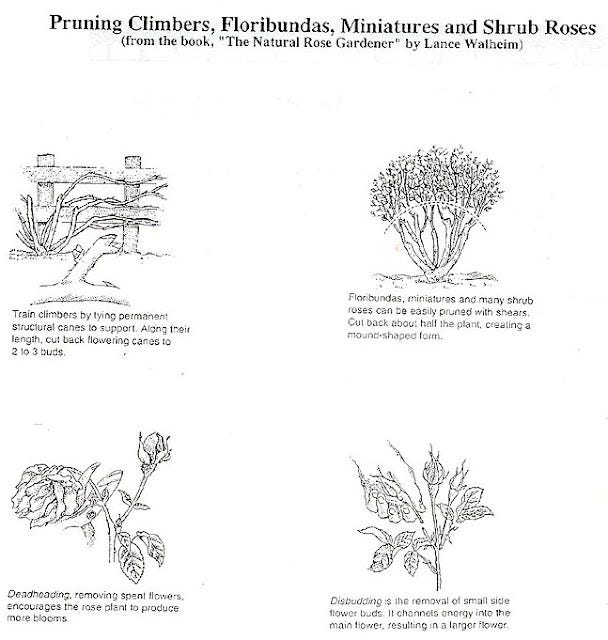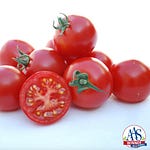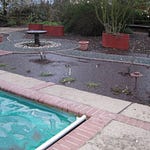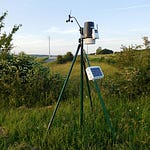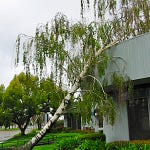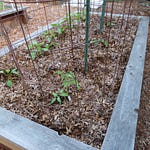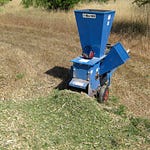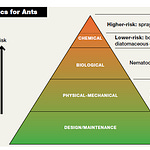Rose Pruning Time is Here
Mid to late winter is rose pruning time, wherever you can grow roses. Here in California and in other USDA Zone 9 areas, mid-December through Super Bowl Sunday (usually the second week in February) is ideal. For colder rose-growing climates, late February through the early rounds of the NCAA Basketball Tournament (mid to late March) is pruning time. Former sportswriter and current Master Rosarian Debbie Arrington supplied those dates. Listen to the above podcast for what she has to say about choosing the right equipment, especially clothing, when pruning roses.
Here then, are some "California (and USDA Zone 9) Rules" for pruning hybrid tea, floribundas, grandifloras and miniature roses this winter. Instructions on how to prune climbing roses would exceed my word limit here, But Debbie Arrington has tips for climbers in the podcast, and here’s a link for more info on pruning climbing roses.
By the way, ask 100 rosarians how to prune roses, and you may get many varied answers. Hell, rosarians don't agree on much when it comes to roses. Which goes to show you:
ROSES ARE THE MOST FORGIVING PLANT IN NATURE.
Give them the basics (sun, water, decent soil), and they can pretty much take whatever you throw at them, and come back blooming. Roses, especially the repeat bloomers, would appreciate a monthly fertilization during the growing season...if you remember.
Rose Pruning Tools:
• A pair of hand bypass pruners (I prefer the Felco #2 or Felco #7).
• Long Handled loppers (My Corona loppers have lasted for years).
• One or two pruning saws (a small hand-held and/or a larger bow-style pruning saw). • For a large rose garden, a rechargeable, battery operated hand-held chain saw is the choice of many rosarians, especially when getting a rose ready for “shovel-pruning”.
• Thorn resistant, long sleeved rose pruning gloves.
Pruning Roses for USDA Zone 9:
• Prune out all dead, aged and weak growth.
• Gnarly stems and gnarly thorns indicate "aged".
• Remove any borer-infested branches, as well. A hollow or blackened center of a stem may indicate the presence of borers. Keep cutting until you see a solid, creamy colored interior. That is the sign of a healthy branch.
• Make no cuts on hybrid tea rose bushes or grandifloras below your knee, unless you're removing the cane completely.
• Leave as many primary canes as the plant can handle. Many cold climate rosarians might advise you to leave only three canes per hybrid tea rose bush. Here in USDA Zone 9, a vigorously growing hybrid tea or grandiflora rose might have as many as nine healthy canes. Keep most, if not all of those canes, for even more roses during spring through fall.
• Try to make all cuts without extreme angles. Nothing exceeding 45 degree cuts; 90 degree cuts (or as close to that as possible) is fine. This is especially true of thick canes. The low part of a 45 degree cut on these would extend past, ultimately damaging, weakening or killing the eye (new bud) you are trying to cut above.
• All cuts should be made one-quarter inch above a dormant eye or intersection of two branches.
• Do not use glue, tree seal or paint on pruning cuts. A clean cut will heal much more quickly when left alone.
• When you are finished, strip all remaining leaves from your roses, then blow or rake all the leaves out of the beds and send them to the dump, not the compost pile. Since all the fungus spores and insect eggs are there from the last growing season, removing these from your yard now reduces next year's problems.
Thank you for listening to the Garden Basics with Farmer Fred podcast! It’s available wherever you get your podcasts. Please share it with your garden friends.
As an Amazon Associate, I earn from qualifying purchases from some of the underlined links in the newsletter. This is how I am trying to keep this a free newsletter. And as long as you buy whatever you want from Amazon using any of those links to get into the Amazon site, I get a few pennies. Thank you.
Thanks for Subscribing and Spreading the Word About the Beyond the Basics: The Garden Basics with Farmer Fred newsletter, I appreciate your support.
Fred Hoffman is also a University of California Cooperative Extension Master Gardener in Sacramento County.



